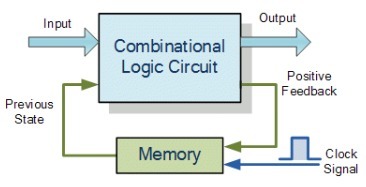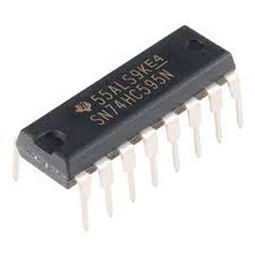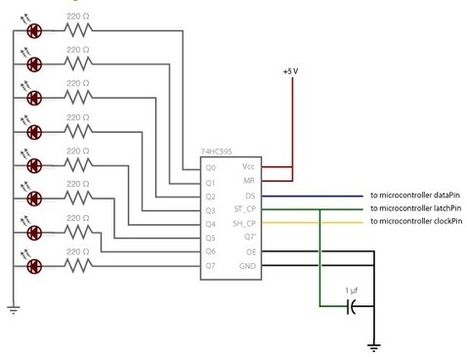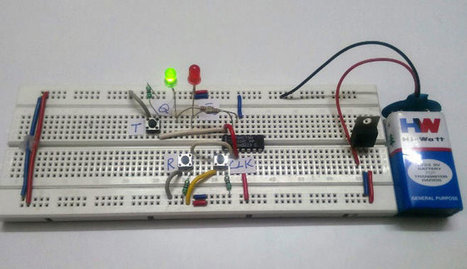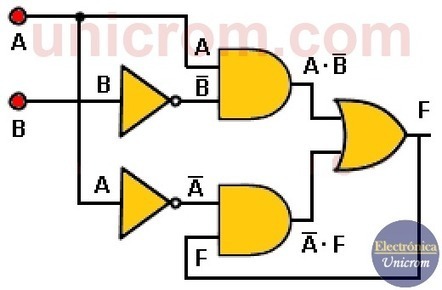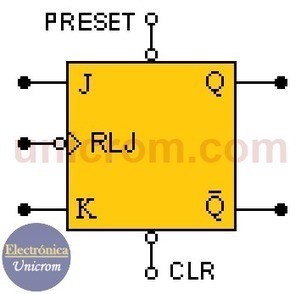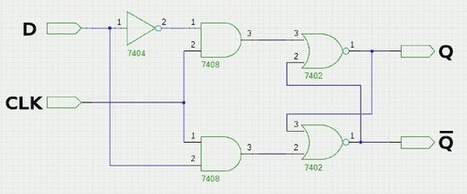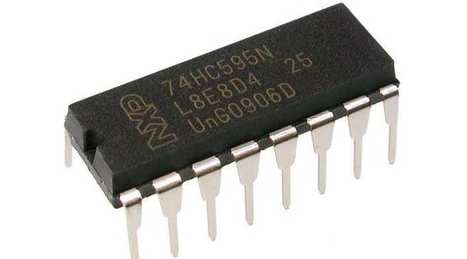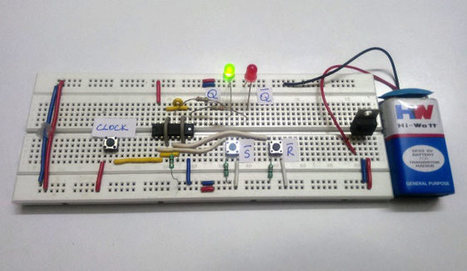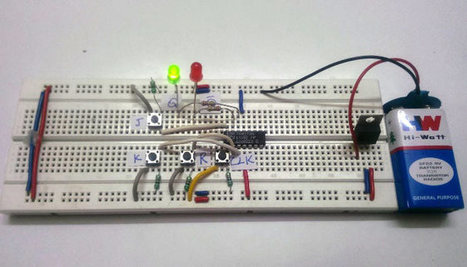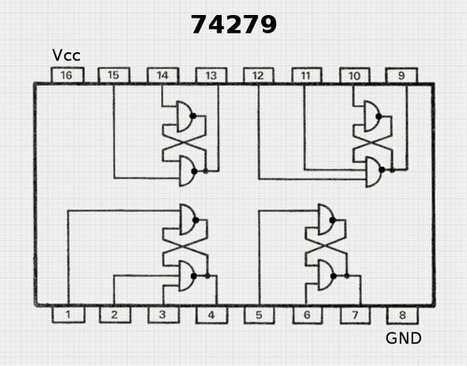Los biestables son los componentes que utilizaremos en los circuitos secuenciales, aquellos en los que su estado lógico depende de sus variables en el tiempo, llamando a como quedan estado. El estado no sólo queda determinado por las entradas, sino también por las entradas anteriores, llamándose éstas, estado interno, estado anterior o memoria.
El biestable es también llamado bascula o flip-flop en el idioma inglés. Podemos dividirlos en asíncronos y síncronos. Un biestable por si solo tiene la capacidad de almacenar un bit de información.
En los siguientes esquemas vamos a ir viendo como están montados los biestables RS, JK, T Y D con puertas NAND y NOR de la familia TTL. En el protoboard sera muy fácil montarlos al estar indicado el modelo y numeración de los pins de la puerta lógica. En los circuitos integrados usados la alimentación vendra por los pines 7 GND y 14 +5V.

 Your new post is loading...
Your new post is loading...
 Your new post is loading...
Your new post is loading...






